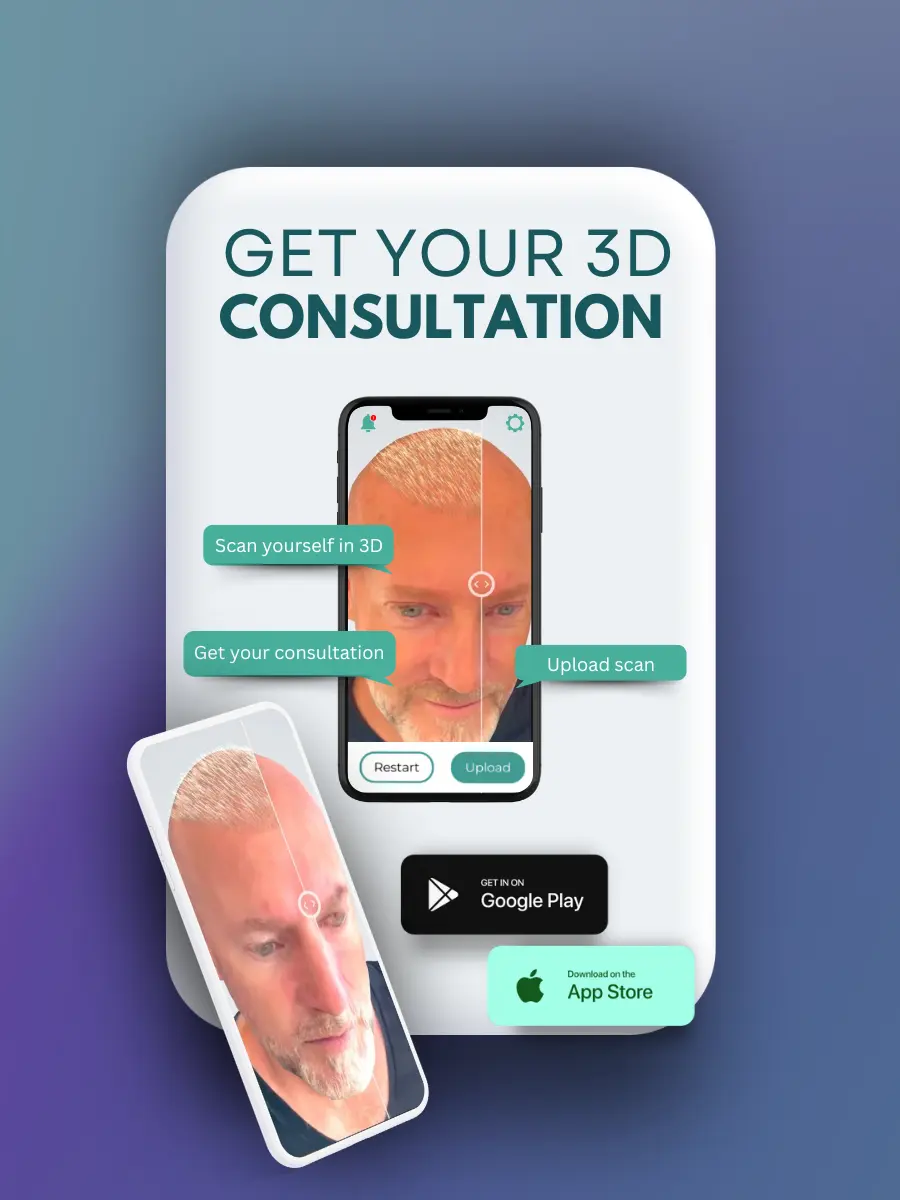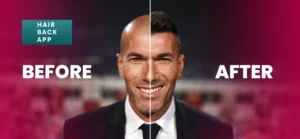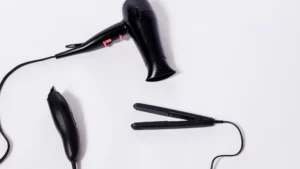So, you’ve taken the leap and undergone a hair transplant – a decision that’s not just about regaining hair but also about boosting your confidence and feeling like your best self. But here’s the thing: your journey to luscious locks doesn’t end in the operating room.
In fact, it’s the days and weeks following your procedure that truly determine the outcome.
Welcome to our guide on what not to do after a hair transplant. My name is Emma Wright, your resident hair restoration specialist. Today, we’ll be discussing what not to do after a hair transplant.
According to recent studies, the post-transplant care regimen is just as vital as the surgery itself, with up to 80% of the final results dependent on proper aftercare. If you’re wondering what not to do after a hair transplant, you’re in the right place.
So, kick back and relax as we walk you through the dos and don’ts of post-transplant care. From avoiding sun exposure to resisting the urge to scratch those pesky scabs, we’ve got you covered.
Trust us – following these tips will ensure that you’re well on your way to rocking that new mane with confidence.
What Not to Do After a Hair Transplant
What should you not do after a hair transplant? Great question!
Here are 10 things to avoid after hair transplant:
-
Touching or Picking
Your transplanted follicles are delicate in the initial stages of recovery. Any unnecessary touching or picking at the grafts can dislodge them, leading to poor growth or even loss of the transplanted hair.
It’s crucial to resist the urge to touch or scratch the scalp, even if it feels itchy or uncomfortable. Gentle care and patience are key during this phase to allow the grafts to firmly establish themselves in their new environment.
Additionally, picking at scabs or crusts that form post-surgery can interfere with the healing process and increase the risk of infection. While it may be tempting to remove them, it’s important to let them fall off naturally.
Your surgeon will provide guidance on when it’s safe to gently cleanse the scalp to aid in the removal of any residual scabs without causing harm to the grafts.
-
Excessive Sun Exposure
Sun exposure can be detrimental to the healing process and the survival of newly transplanted follicles. Direct sunlight can cause sunburn on the sensitive scalp skin, leading to inflammation and potential damage to the grafts.
To protect the transplanted area, it’s advisable to wear a wide-brimmed hat or use a scarf to shield your scalp from the sun’s harmful rays when outdoors. Additionally, consider using a sunscreen specifically formulated for sensitive skin or one recommended by your surgeon to provide further protection.
Furthermore, prolonged sun exposure can lead to increased swelling and discomfort, prolonging the recovery period. Even after the initial healing phase, it’s essential to continue protecting your scalp from excessive sun exposure to maintain the health and longevity of your transplanted hair.
Following your surgeon’s recommendations regarding sun protection will help minimize the risk of complications and ensure optimal results from your hair transplant procedure.
-
Strenuous Exercise
Engaging in strenuous physical activities immediately after a hair transplant can increase blood flow to the scalp, leading to swelling and potential damage to the newly transplanted grafts.
Additionally, activities that involve heavy lifting or intense workouts can cause sweating, which may increase the risk of infection in the transplanted area. To promote optimal healing, it’s best to avoid strenuous exercise for at least a week following the procedure.
Light activities such as walking are usually permitted but consult with your surgeon for specific guidelines tailored to your individual case. Moreover, intense physical exertion can elevate blood pressure, which may contribute to bleeding or increased swelling around the surgical site.
Elevated blood pressure can also interfere with the body’s natural healing process, potentially compromising the success of the transplant. It’s important to prioritize rest and relaxation in the days following your hair transplant to allow your body to focus its energy on healing and regeneration.
-
Smoking and Alcohol
Smoking and alcohol consumption can have detrimental effects on the body’s ability to heal after surgery, including a hair transplant. Nicotine and other chemicals in cigarettes can constrict blood vessels, reducing blood flow to the scalp and impairing the delivery of oxygen and nutrients to the healing tissues.
This can prolong the recovery process and increase the risk of complications such as poor graft survival or infection. Similarly, alcohol can interfere with the body’s immune response and impair wound healing, compromising the outcome of the transplant.
It’s advisable to refrain from smoking and alcohol consumption for several weeks following the procedure to optimize healing and ensure the best possible results. Additionally, smoking and alcohol use can contribute to dehydration, which can further hinder the healing process and increase the risk of complications.
Staying hydrated is essential for supporting cellular function and tissue repair, so it’s important to drink plenty of water throughout the recovery period. By avoiding smoking and alcohol and maintaining proper hydration, you can help minimize the risk of complications and promote optimal healing after your hair transplant surgery.

-
Saunas and Steam Rooms
Saunas and steam rooms are environments of high heat and humidity, which can be detrimental to the healing process after a hair transplant. The excessive heat can cause blood vessels to dilate, leading to increased swelling and potential damage to the newly transplanted grafts.
Additionally, the humidity in saunas and steam rooms can create a breeding ground for bacteria, increasing the risk of infection in the transplanted area. It’s crucial to avoid these environments for at least a few weeks following the procedure to allow the scalp to heal properly and minimize the risk of complications.
Furthermore, the heat and steam in saunas and steam rooms can cause excessive sweating, which may lead to the dislodgment of grafts and poor growth of transplanted hair. Sweat contains salts and other substances that can irritate the scalp and impede the healing process.
To promote optimal healing and ensure the best possible results from your hair transplant surgery, it’s essential to avoid saunas and steam rooms until your surgeon gives you the go-ahead to resume such activities.
-
Scratching or Rubbing
It’s normal for the scalp to feel itchy and irritated in the days following a hair transplant surgery due to the healing process and the formation of scabs. However, scratching or rubbing the scalp can dislodge grafts and disrupt the healing process, leading to potential complications and suboptimal results.
It’s important to resist the urge to scratch or rub the scalp and to avoid any actions that could disturb the transplanted area. Instead, follow your surgeon’s instructions for gently cleansing the scalp and applying any prescribed medications to alleviate itching and promote healing.
Additionally, picking at scabs or crusts that form on the scalp can interfere with the healing process and increase the risk of infection. It’s essential to let these scabs fall off naturally, typically within one to two weeks after the procedure.
Trying to remove them prematurely can cause damage to the grafts and delay the growth of transplanted hair. By avoiding scratching, rubbing, and picking at the scalp, you can help ensure the success of your hair transplant and achieve the desired outcome.
-
Sleeping on Your Stomach or Sides
Sleeping positions can significantly impact the healing process after a hair transplant. Sleeping on your stomach or sides can exert pressure on the transplanted area, potentially causing grafts to become dislodged or misaligned.
This can compromise the overall success of the procedure and lead to uneven or patchy hair growth. To minimize the risk of graft damage and promote optimal healing, it’s best to sleep on your back with your head elevated on a few pillows. This position reduces pressure on the transplanted area and provides better support for the head and neck during sleep.
Moreover, sleeping on your back helps to improve blood circulation to the scalp, which is essential for delivering oxygen and nutrients to the healing tissues. Adequate blood flow promotes faster healing and ensures the survival of transplanted grafts.
While it may take some time to adjust to sleeping on your back, especially if you’re accustomed to sleeping in other positions, making this adjustment is crucial for maximizing the success of your hair transplant surgery.
-
Wearing Tight Headwear
Tight headwear such as hats, caps, or anti-hair loss helmets can exert pressure on the transplanted area and disrupt the healing process. This pressure can cause grafts to become dislodged or misaligned, leading to suboptimal results.
Additionally, tight headwear can restrict blood flow to the scalp, which is essential for delivering oxygen and nutrients to the healing tissues. To avoid interfering with the healing process and ensure the best possible outcome from your hair transplant surgery, it’s important to avoid wearing tight headwear for at least a few weeks following the procedure.
Furthermore, wearing tight headwear can create friction against the scalp, which may irritate the skin and increase the risk of infection. It’s essential to allow the scalp to breathe and heal without any unnecessary pressure or irritation.
If you need to protect your scalp from the sun or inclement weather, opt for loose-fitting headwear made of breathable materials such as cotton or linen. By avoiding tight headwear and allowing the scalp to heal properly, you can help ensure the success of your hair transplant and achieve the desired aesthetic outcome.
-
Hair Products
Using hair products such as gels, mousses, or styling sprays in the immediate aftermath of a hair transplant can irritate the scalp and interfere with the healing process. Many hair products contain chemicals and additives that may be harsh on the sensitive scalp skin, potentially causing inflammation or allergic reactions.
Additionally, applying products directly to the transplanted area can create a barrier that hinders the absorption of essential nutrients and oxygen, which are crucial for graft survival and optimal healing. It’s best to avoid using hair products for a specified period following the transplant surgery, as recommended by your surgeon.
Moreover, some hair products may contain ingredients that can clog the hair follicles or disrupt the natural balance of the scalp microbiome, leading to complications such as folliculitis or ingrown hairs.
To minimize the risk of such complications and promote healthy hair growth, it’s important to wait until the scalp has fully healed before resuming the use of hair products. When you do reintroduce hair products into your routine, opt for gentle, hypoallergenic formulations that are free from harsh chemicals and fragrances to support the health and vitality of your transplanted hair.
-
Swimming
Swimming in pools, oceans, or lakes shortly after a hair transplant surgery can pose several risks to the healing scalp. The chemicals used to sanitize pool water, such as chlorine, can irritate the sensitive skin of the scalp and disrupt the healing process.
Similarly, exposure to saltwater in oceans or lakes can cause dryness and irritation, leading to discomfort and potential complications. Moreover, swimming in contaminated water sources increases the risk of infection, which can compromise the success of the transplant and lead to additional medical issues.
Additionally, the pressure and friction exerted on the scalp during swimming, especially in vigorous strokes or movements, can dislodge grafts and impair the growth of transplanted hair.
Even wearing a swim cap may not provide sufficient protection, as it can still create friction and pressure against the scalp. It’s best to avoid swimming for at least a few weeks following the hair transplant surgery, allowing the scalp adequate time to heal and minimizing the risk of complications.
Once your surgeon gives you the green light to resume swimming, be sure to follow any specific recommendations or precautions to protect the transplanted area and promote optimal healing.
What Can Ruin A Hair Transplant?
Several factors can ruin the outcome of a hair transplant if not properly addressed.
Here are some key factors:
- Poor Candidate Selection: Not everyone is an ideal candidate for a hair transplant. Factors such as the extent of hair loss, the availability of donor hair, and overall health play crucial roles in determining candidacy. Choosing the wrong candidate can lead to unsatisfactory results.
- Inexperienced Surgeon: The skill and experience of the surgeon performing the hair transplant are paramount to its success. An inexperienced surgeon may create unnatural hairlines, damage existing hair follicles, or improperly place grafts, resulting in a less-than-desirable outcome.
- Insufficient Donor Hair: Adequate donor hair is essential for a successful hair transplant. If there isn’t enough donor hair available or if it’s of poor quality, the transplant may not achieve the desired density or coverage.
- Poor Surgical Technique: The technique used during the transplant procedure greatly influences the results. Poor surgical technique, such as improper graft extraction or placement, can cause grafts to become damaged or fail to thrive, leading to patchy or uneven hair growth.
- Inadequate Post-Operative Care: Proper post-operative care is crucial for the success of a hair transplant. Failure to follow post-operative instructions, such as avoiding certain activities, not keeping the scalp clean, or skipping medications, can increase the risk of complications and negatively impact the results.
- Infection: Infection at the donor or recipient sites can lead to complications and compromise the success of the transplant. Strict adherence to hygiene protocols and post-operative care instructions can help minimize the risk of infection.
- Medical Conditions: Underlying medical conditions, such as uncontrolled diabetes or autoimmune disorders, can interfere with the healing process and negatively affect the outcome of a hair transplant.
- Medications: Certain medications, such as blood thinners or immunosuppressants, can interfere with the healing process and increase the risk of complications following a hair transplant.
- Poor Lifestyle Choices: Factors such as smoking, excessive alcohol consumption, and poor diet can negatively impact the body’s ability to heal and may compromise the success of a hair transplant.
Don’t Take That Risk
Now that you know what not to do after a hair transplant, it’s crucial to adhere to these tips and guidelines diligently, especially if you’re aiming for the best possible results from your hair transplant. Your commitment to following these recommendations plays a pivotal role in ensuring the success of the procedure and overall satisfaction with your new hair growth.
If you’re wondering what to expect after a hair transplant, it’s important to understand that the recovery process varies from person to person. Over time, the transplanted hair will shed before regrowing, and you’ll gradually begin to see the full results of the transplant.
You can join support groups that help you monitor your hair transplant results and milestones. Our hair.back app makes it easy to streamline and track your progress, connect with others who have undergone similar procedures, and receive guidance from experts in the field.
Ultimately, patience is key as you navigate the post-operative period and await the full results of your hair transplant. While the initial recovery phase may require some adjustments and patience, the long-term benefits of a successful hair transplant are well worth the effort.














